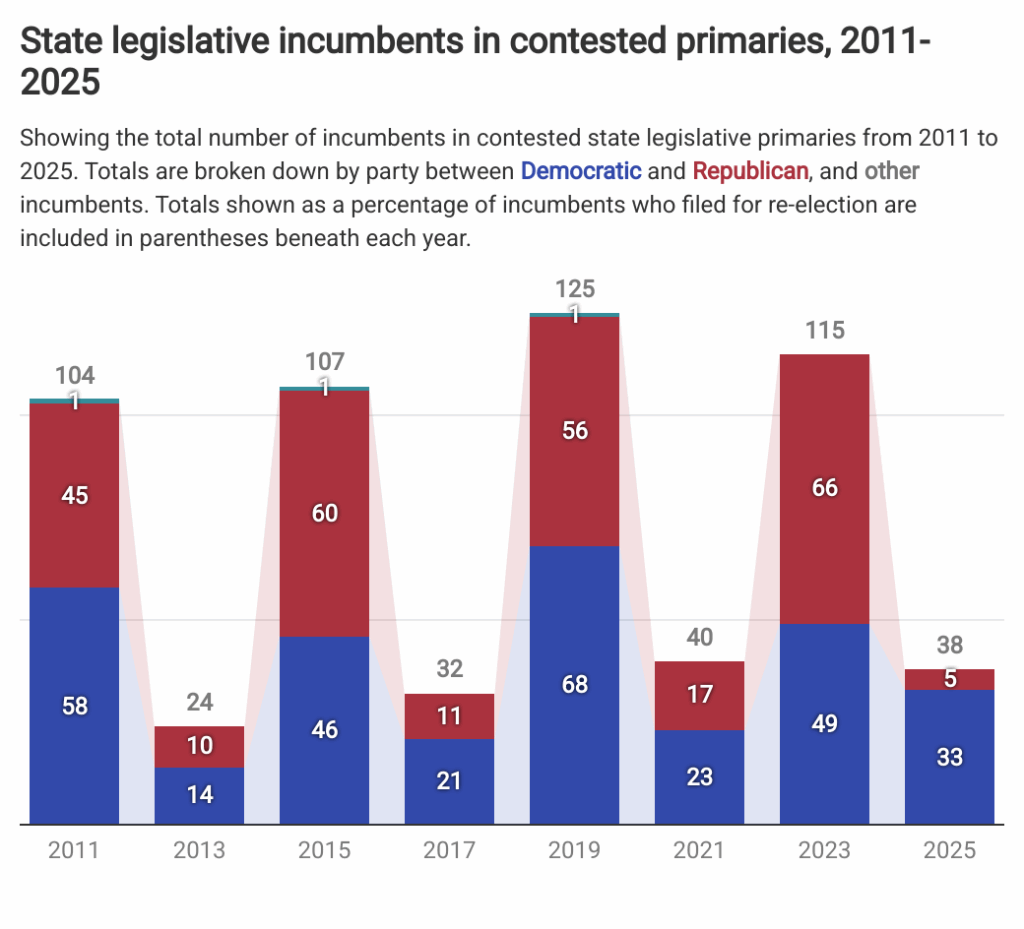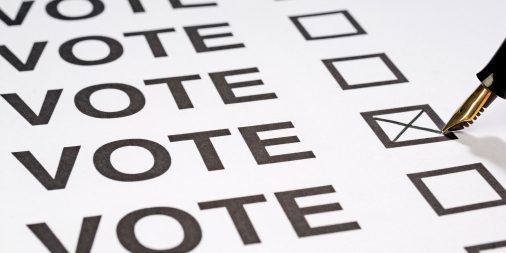Thirty-eight state legislative incumbents faced contested primaries in 2025, representing 22% of all incumbents who filed for re-election. While that was two fewer than the 40 contested incumbents in 2021, it was larger by percentage than each of the three previous odd-year cycles following presidential elections. Twelve percent were contested in 2013, 16% in 2017, and 20% in 2021.
Ballotpedia uses the number and percentage of incumbents in contested primaries to help determine the overall competitiveness of an election cycle. A larger number of contested primaries indicates more opportunities for voters to elect a non-incumbent to office. A smaller number indicates fewer of those opportunities.
Thirty-three of the contested incumbents were Democrats, representing 33% of the 99 Democratic incumbents who filed for re-election. That was a 43% increase from 2021. Five contested incumbents were Republicans, seven percent of the 73 Republican incumbents who filed for re-election and a 71% decrease from 2021.

Thirty-five of the contested incumbents were in New Jersey, where 31 Democratic incumbents and four Republican incumbents were contested. Three New Jersey Democratic incumbents lost.
Virginia saw three contested incumbents — two Democrats and one Republican. No contested incumbents were defeated in Virginia.
The average number of contested incumbents between 2011 and 2023 was 78. In just odd-years following presidential elections, the average was 32.

The New Jersey and Virginia state legislative general elections are on Nov. 4, 2025.


